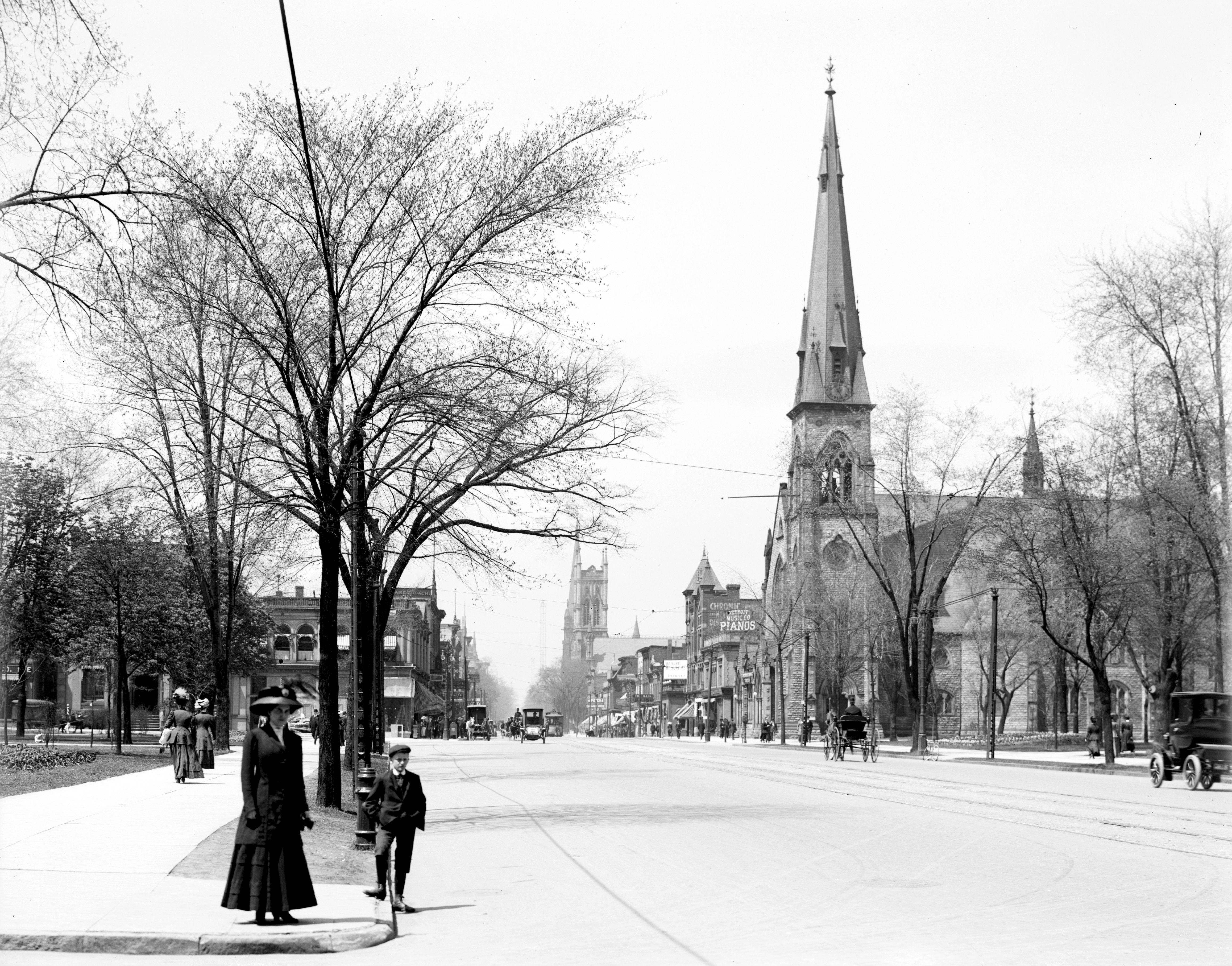When Cyclists, Not Drivers, Led the Charge for Better Roads
In the 1800s, American roads were bad.

In 1909, a section of Woodward Avenue in Detroit was paved, a one mile stretch that was not the first concrete pavement in the United States, but was by far the longest. The paving presaged the era of the automobile, but it was also the culmination of a long fight for better roads undertaken by a perhaps surprising constituency: cyclists, who had coalesced into the so-called “Good Roads” movement, a brief but effective nationwide campaign that came together around the turn of the century.
That’s because by the late 1800s, the bicycle had assumed its modern form, being both easier to ride and safer than the old penny-farthing. They were also more affordable and easier to maintain than horses, which meant that, for awhile, their popularity exploded. But these ‘poor man’s horses’ did have one significant drawback: They were close-to-useless on muddy or rutted roads—conditions that impeded, but did not necessarily halt, horses and wagons.
Enter the League of American Wheelmen, a cycling organization founded in 1880, which led the campaign for not just better roads, but better administration of their design, construction, funding and maintenance.
“It is one of the striking facts of bicycling experience,” read an article in the 1885 issue of the Bulletin, a League publication, “that the moment any person becomes a Wheelman, he is instantly and ardently convinced of the necessity of improved highways.”
From 1889 into the 1900s, the League regularly published technical articles on road construction as well as descriptions of relevant patents and case studies. No idea seems to have been too outlandish. One article, for example, suggested hiring tramps to act as road inspectors. More conventionally, they also solicited the addresses of civil engineers, surveyors, and road officials, in addition to trying to get their publications in the hands of influential citizens.
Their efforts paid off in places like Detroit, where the cause was led by a peripatetic merchant named Horatio S. Earle, whose involvement was so extensive that he eventually ended up with the nickname “Good Roads Earle.”
Born on a farm near Mount Holly, Vermont, in 1855, Earle took night courses in drafting, before taking charge of two foundries. He then, for a stretch, was a traveling salesman for a Massachusetts implement company, before moving to Detroit in 1889 to start his own firm.
It was in Detroit that Earle was introduced to cycling and, later ended up the leading the Michigan chapter of the League of American Wheelmen (the organization survives today as the League of American Bicyclists). Earle was chiefly an advocate, but he also organized things like a “Good Roads” festival in Port Huron, Michigan, over Independence Day weekend in 1900. At first, the central attraction was a model road intended to demonstrate new construction methods; however, Earle later assembled a 40-car “train” from construction equipment for spectators to ride, mostly to increase attendance. The festival also served a political purpose, as the organization had put forth several candidates for public office that year. Among them were Aaron Bliss, who was elected governor, and Earle himself, who was elected to the state senate.
And it was there that Earle pushed for a law establishing a board to oversee and improve Michigan’s roads. He also proposed the first interstate highway network, a nationwide network connecting every state capital to each other, as well as Washington, D.C. Closer to home, he also helped establish the Wayne County Road Board in 1906, nominating fellow wheelman, Edward N. Hines to the board. Hines went on to invent the painted center line separating traffic onto opposite sides of the street. He was inspired, so he said, by seeing milk running out of a leaky wagon.
It wasn’t just Detroit, of course. Across the U.S., there was a strong albeit latent desire to see something done about the roads, which had been cared for outside city limits mostly by farmers, who often worked under poorly-trained roads supervisors. Railroads were also willing to support better roads, to assure a steady flow of crops during harvest, rather than a glut of deliveries when the roads were finally dry enough to haul grain over.
But it was the League of American Wheelmen that were among the first to help the idea along, since for bicyclists, good roads were one of their only concerns.
Which brings us back to Woodward Avenue and 1909, also, coincidentally, the first full year of of production for the Model T, an automobile that would eventually make road improvement a concern for hundreds of thousands of drivers, too.
In hindsight, that development isn’t so surprising, of course, especially since, in Detroit at least, some of the seeds of the coming sea change were already there. The Wayne County Road Board included one of the architects of the changes to come.
His name was Henry Ford.








Follow us on Twitter to get the latest on the world's hidden wonders.
Like us on Facebook to get the latest on the world's hidden wonders.
Follow us on Twitter Like us on Facebook